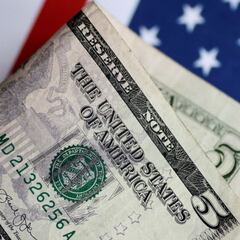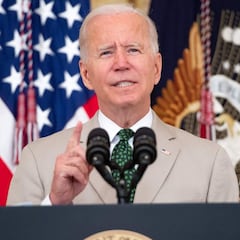Unemployment benefits: how many Americans will stop receiving the payment in September and why?
The extra benefits are due to expire on September 6, potentially leaving millions of Americans in the lurch during another covid-19 wave.


How many Americans will stop receiving the benefits?
The Century Foundation estimates that as many as 7.5 million workers will lose access to all jobless aid on September 6. The $300 extra benefit is part of the Pandemic Emergency Unemployment Compensation (PEUC) and is being claimed by 4.2 million people, a major increase from the 1.2 million claimed a year ago.
Why are they ending?
The end date for the extra benefits was always set for September 6. President Biden's American Rescue Plan extended the original CAREs Act legislation, introduced in March 2020, from March 2021 to Labour Day. Without the extension, it was estimated that 11.4 million people would have lost jobless aid.
The vaccine rollout has managed to keep cases and deaths from covid-19 relatively low in the last few months. The US has just crossed the threshold of 50% of the population fully-vaccinated, but the speed of vaccinations is at a crawl. States have begun fully reopening economies and striking down rules relating to the wearing of masks, meaning people made redundant during the pandemic are returning to the workplace.
Furthermore, the most recent unemployment figures of the Labor Department show more people are returning to work then estimated. In July, nearly 1 million workers rejoined the payroll and the unemployment rate stands at 5.4%. Before the pandemic, the unemployment rate stood at 3.5%. It could be deemed that is no longer necessary to keep the benefits as the US is tentatively returning to normal. Even a change of 1.9% represents hundreds of thousands of Americans who will be left much poorer without the extra payments if they do indeed end in a month.
Democrats’ $3.5 trillion budget plan does not include an extension of pandemic unemployment benefits
— Jeff Stein (@JStein_WaPo) August 9, 2021
Will they continue after Labor Day?
The White House is yet to decide whether to end the benefits or to extend them further. In a recent press conference, White House Press Secretary Jen Psaki said that the President, "hasn't made a decision to extend it, he also hasn't made the decision not to... the final decision has not been made."
Psaki tells @nancycordes that "there has not been any decision" yet about whether the Biden administration will seek to renew expanded unemployment benefits when they expire in early September https://t.co/Nj065CIsxp pic.twitter.com/N5UB6IUdOj
— CBS News (@CBSNews) August 6, 2021
This is likely due to the rising threat of the Delta variant. The seven-day average for cases in the US are at 97,339 and rising. If this were to continue, there could be threats to businesses and jobs. Some states have already started reimposing some of their covid-19 restrictions in a belated effort to suppress the growth of the virus.
Related stories
And it has been proven that the extra benefits do not discourage people from getting back into work. Many of the 26 states that ended their extra benefits early saw a slower uptick in employment than those that continued with the program, suggesting that the benefits are also providing greater economic stimulus to the state’s businesses.
The greater problems for getting people back into work has been health and safety, especially with covid-19, and access to child care. “Unemployment benefits were not the thing holding people back from going to work,” said Dave Gilbertson, UKG vice president. “There are other elements out there, particularly in their personal lives, making it really difficult to go back to work.”

